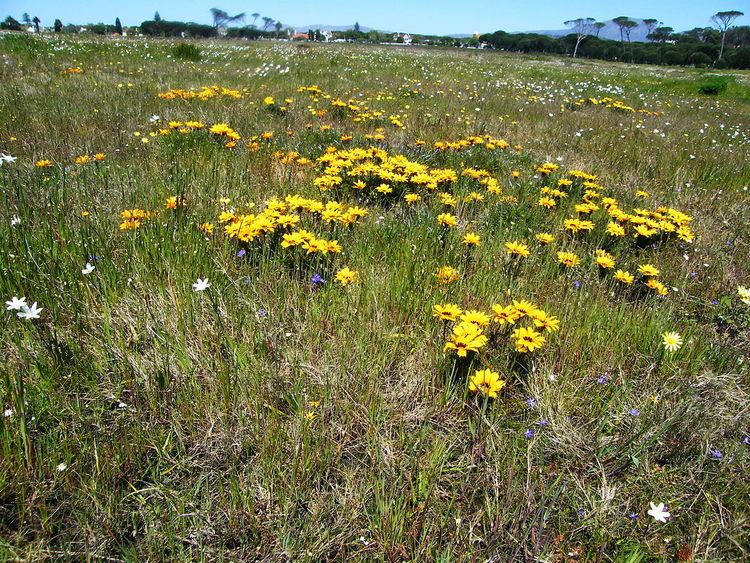 | ||
Cape Flats Sand Fynbos (CFSF), previously known as Sand Plain Fynbos, is a critically endangered vegetation type that occurs only within the city of Cape Town. Less than 1% of this unique lowland Fynbos vegetation is conserved.
Contents
Description
This is the richest and most diverse type of Sand Fynbos. It also has the highest number of threatened plant species. It is the wettest and coolest of all West Coast Sand Fynbos, growing primarily in deep, white, acidic sands. It is dominated by Proteoid and Restioid fynbos, but Ericaceous fynbos also occurs in wetter areas and Asteraceous fynbos in drier spots. In winter, seasonal wetlands appear in many areas, and mists often cover the landscape.
Threats and conservation
Lying as it does entirely within the limits of Cape Town, over 85 percent of what was once Cape Town’s commonest vegetation type is now destroyed and covered by urban sprawl. Half of what remains is badly infested with invasive alien plants (Acacia saligna, Acacia cyclops, Pinus, Eucalyptus and Kikuyu grass), and less than 1 percent is actually statutorily conserved.
Surviving pockets exist in several small nature reserves within the city, such as Rondevlei, Kenilworth Racecourse, Rondebosch Common and Tokai Park. These are identified as “Core Conservation Sites”. However, these sites alone are too small to preserve this vegetation type, and they themselves are threatened by invasive alien plants and the destructive practise of mowing (which eliminates all the tall and serotinous species).
Nature preserves with Cape Flats Sand Fynbos habitat include:
Historically, areas of Cape Town that weren’t developed for housing were often planted with commercial plantations of invasive European Pines. A fire at Tokai forest in 1998 revealed that this pine plantation is located on top of intact CFSF seed beds from its original vegetation. To date over 340 indigenous plants have emerged from the seed bank, and 22 threatened plant species and 2 threatened amphibian species are present.
Cape Flats Sand Fynbos is particularly rich in Protea and Erica species, many of which are endemic to this vegetation type and occur nowhere else. This was also the habitat of several species of plant which are now extinct, such as the Aspalathus variegata(the Cape Flats Capegorse), Erica pyramidalis (the Pyramid Heath), Erica turgida (the Showy Heath), Erica verticillata (the Whorl Heath) and Liparia graminifolia (Grass Mountainpea).
Cape Flats Sand Fynbos: Fact Sheet
